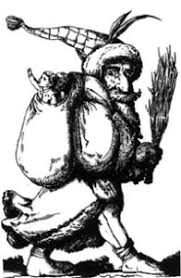Title: Bigs, Littles & Families
General Information about Item:
- Customary Folklore: Ritual, Tradition
Informant Data:
- Dami Apoeso is 21 years old and was born in Hartford Connecticut. He grew up in the Bronx, New York City and currently lives in Spring Valley, New York. He is majoring in computer science. He danced for approximately 6 years in a summer camp before joining Sheba his sophomore year at Dartmouth.
Contextual Data:
All members of Sheba are involved in bigs, littles and families. Typically bigs are seniors and littles are freshmen, and sophomores and juniors make up the families. Families, bigs, and littles are set up at the beginning of fall term after new members have joined the team. Bigs and littles have existed for a long time according to the informant, but involving sophomores and juniors and creating families is a new tradition that started this year.
Sheba thinks of itself as a second family, and its tradition of having bigs and littles ensures that freshmen assimilate well into the team and feel included. The new tradition of having families ensures that people from all years are involved and reinforces Sheba’s attempts to maintain its inclusive culture.
Item:
All new members of the team (called littles) are given a big (seniors on the team). Bigs guide their littles and give them advice regarding the team, school, and life in general. The big-little system was created to help new members feel included on the team and make their transition easier. This year sophomores and juniors were also included in the tradition with the creation of families. Families serve a similar role as bigs and littles, and members get close to other members in their families.
Associated file (a video, audio, or image file):
Bigs, Littles & Families
Transcript of Associated File:
“Typically in Sheba we had big-littles where a senior would take a freshman under their wing as their little and show them the ropes and make sure they assimilate well into the group. This year our directors have implemented families where you still have that big-little relationship, but we have sophomores and juniors join these relationships and form families. That way no one is really excluded. Um you have a freshman that has a senior as their big but they have other upperclassmen in their family, so yeah that was a nice addition.”
Informant’s Comments:
The informant believes the big-little relationships have been successful at strengthening the bonds between team members, and furthermore believes the creation of families has helped with this goal as well.
Collector’s Comments:
This is an extremely interesting tradition because it is very similar to what many greek houses do to help new members transition into joining their house. The tradition has worked very well for greek houses so it is not surprising that it has worked for Sheba as well.
Collector’s Name: Marcus Reid
Compiled/Analyzed by: Sruthi Pasupuleti
Tags/Keywords:
- Dance
- Team
- Ritual
- Tradition
- Bonding



